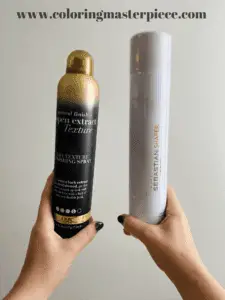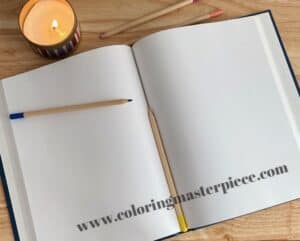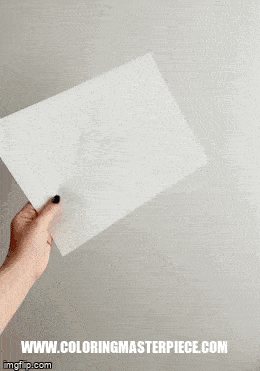How To Seal Pencil Drawings On Paper
So, you've finished your pencil drawing and suddenly realize you're out of the final fixative. What can you do to prevent smudges? Don't worry! Using hairspray as an alternative to the final fixative isn't totally out of the question, primarily if you use it correctly.
Can you use a hairspray on pencil drawings? Yes! Hairspray can be used as a useful final fixative for pencil drawings. It works well to protect your drawing from smudging. But before depressing the hairspray nozzle, you should know that hairspray can discolor, or yellow, drawing paper over time. You won't notice it right away, but eventually, you certainly will.
To Spray Or Not To Spray

Although we wouldn't recommend hairspray as an appropriate final fixative for every pencil drawing you create, it is useful in a pinch. We recommend you use it on work that you're not necessarily interested in preserving long-term.
The only real drawbacks to using hairspray are that it will break over time and no longer protect the work as it did initially, and eventually, it will discolor your drawing paper. So, if that yellow discoloration isn't a deal-breaker, then hairspray may prove to be an economical choice for you.
Many grade school art teachers use hairspray as a fixative for their students' work because it is an inexpensive alternative and works well for their more temporary purposes.
Advantages of Using Hairspray
Two of the most prominent complaints artists have about using the final fixative are its noxious smell and the expense of popular final fixatives. Although some final fixative brands are more affordable than others, those cans can seem small and don't provide too much bang for your buck if you are an incredibly productive artist.
In comparison to the final fixative, hairspray is much less expensive. We recommend you purchase the cheapest aerosol hairspray available. More expensive hairsprays often contain oily, vitamin-infused hair conditioners that can ruin your artwork.
Generally, the simpler and cheaper the hairspray, the better! Don't worry too much about the type of hairspray: medium hold, firm hold, extra hold. Historically, that doesn't seem to matter.
Hairspray is readily available, too. Even gas stations carry small cans. Final fixative is usually only available at a craft or art store, typically not as accessible as a big box store.
It's important to note that using hairspray will not hurt your work at all if, within a day or two of using it as a temporary solution, you respray your pencil drawing with a more permanent final fixative.
How to Use Hairspray with Pencil Drawings
If you plan to use a hairspray as a final fixative, you should know how to use it correctly.
-
- If you've never used hairspray as a fixative before, practice first.
- Make sure you're using an aerosol hairspray. It would be best if you never used a pump hairspray. Pump hairspray is notorious for clogging, and it sprays unevenly.
- It's always better to use too little than to use too much. You can reapply if necessary.
- Be sure to use unscented hairspray. The last thing you want is a smelly pencil drawing!
Be sure to move left to right to evenly coat your masterpiece!
Not unlike the recommendations for using a final fixative, the advice for correctly using hairspray is similar:
-
- Make sure you are finished with your piece. Once you spray it with hairspray, you will be unable to make edits.
- Use a soft brush to remove any debris from the artwork.
- Place your drawing in a well-lit and ventilated area. You want to be able to see clearly what you're doing.
- Hold the hairspray can approximately 6-8 inches away from your artwork, and spray an even coat working from left to right.
- Once the hairspray is completely dry, you can add more coats as needed.
Learn more about the what pencils to use by checking out Can You Draw and Color with a Regular Pencil?
Disadvantages of Hairspray
Hairspray often contains natural or synthetic oils that work as conditioners. If not used carefully, these conditioners have been known to leave oily spots on artwork.
Check the ingredients list on the back of the hairspray can. Try to avoid spray that contains any lubricant or oil or any chemical that ends in the word "glycol."
The best hairspray to use is a cheap, old-fashioned hairspray that contains acrylate. Acrylate is the ingredient that acts as the finishing agent. Make sure you don't spray too much, or your paper will become sticky.
While pencil drawings are more likely to smudge, they are less likely to fade. Graphite, the crystalline form of carbon, just doesn't breakdown the way other media might. The real issue here is the paper you've chosen to use.
Choose your paper wisely, and you automatically increase the lifetime of your work.

Some things to think about when selecting what paper is best for your project:
– Sketch Paper is typically used for practice because it is cheap, disposable, and usually made from a pulpwood base.
– Office printer paper is a perfect paper for practice, too. Economical and disposable printer paper is an excellent way to get your ideas down quickly.
-Strathmore and Canson papers are perennial favorites for many artists interested in archival properties for their work.
It's essential to keep in mind that while final fixatives work for the lifetime of your drawing, hairspray eventually loses its ability to protect your pencil drawing from smudging.
If you are interested in protecting your artwork for infinity, we highly recommend you use a high-quality paper and a final fixative (not hairspray!)
Freedom of Choice
The one rule in art is that there are no rules. Artists don't have to do anything they don't want to do. Period. So, you don't have to use fixative at all.
You should know those pencil drawings are notorious for smudging. However, if you are anti-fixative, you have several alternatives available to you to reduce smudging from the outset.
– Choose a high-quality drawing paper and a 4H (or higher) grade
pencil. 4H pencils are more challenging and less likely to
smudge, but they are lighter in value.
– Place a piece of paper between your drawing hand and your
paper. Rest your hand on the paper instead of your artwork.
– Use artist's tape to secure a piece of vellum or tracing paper
over your artwork to protect it.
– Use plastic sleeve protectors to protect your pencil drawings
and make it easier to showcase within a portfolio.
No matter how you choose to protect your work, the bottom line is that you should have as much information as possible to make the best choices you can for you and your work.
A good rule of thumb to follow is, "You get what you pay for." The higher quality of the final fixative the better protected your artwork. Hairspray works in a pinch, but for serious artists looking for archival quality pieces, it's best to save hairspray for your hair.
Embrace the Smudge
What is so bad about smudging anyway? Not unlike a patina on metalwork, smudging is either in large or small part, part of the natural aging of your piece. There is credence to the idea that smudging can make the artwork more alive. Beautiful in its shadows and blends, smudging adds a level of almost accidental complexity to your work.
Upon discovering smudging, some artists don't try to erase or fix it but work the smudging into the piece as another area of gradation. When you can, embrace the smudge and see where it may lead. You may be pleasantly surprised!
Related Questions
Can I use hairspray as a fixative with other media like charcoal?
Yes. You can use hairspray as a fixative for charcoal. Much more prone to smudge, charcoal doesn't bind with the paper; it sits on top. So, a final fixative is incredibly essential for charcoal drawings. Again, we don't recommend it for artwork you plan to keep long-term, but it will work in a bind.
How do final fixatives work?
Similar to varnish, the fixative is a clear, alcohol-based liquid made with resin or casein. When sprayed on a dry medium, like pencil, charcoal, or chalk, it stabilizes the paper's pigment, preserving it.
Are all fixatives the same?
There are two types of fixative: workable and final. After spraying workable fixative on over artwork, artists are still able to add additional layers of pencil to the existing piece without fear of smudging what's already been done.
The final fixative does precisely what its name implies. Once sprayed, no additional changes can be made to the piece once the final fixative is used. The final fixative not only prevents smudging but also preserves the artwork with archival quality.
When would hairspray be appropriate to use as opposed to a final fixative?
Hairspray is a cheap, readily available, less smelly option than final fixative for hobbyists who aren't necessarily interested in archival quality preservation of their work.
It's also perfect as a final fixative if you're looking for a way to preserve your work for storage. Another favorite use is in the sentimental preservation of a piece of artwork presented to you by a little one.
Interested in learning even more? Click here to download my free adult coloring eBook and signup for my email newsletter!
 Please note: This blog post is for educational purposes only and does not constitute legal or medical advice. Please consult a legal expert or medical doctor to address your specific needs.
Please note: This blog post is for educational purposes only and does not constitute legal or medical advice. Please consult a legal expert or medical doctor to address your specific needs.
How To Seal Pencil Drawings On Paper
Source: https://coloringmasterpiece.com/how-to-finish-pencil-drawings-with-hairspray/
Posted by: knighthattlem.blogspot.com


0 Response to "How To Seal Pencil Drawings On Paper"
Post a Comment